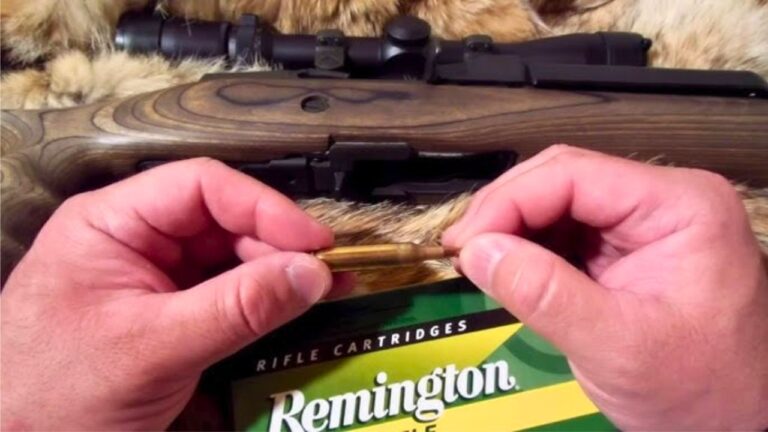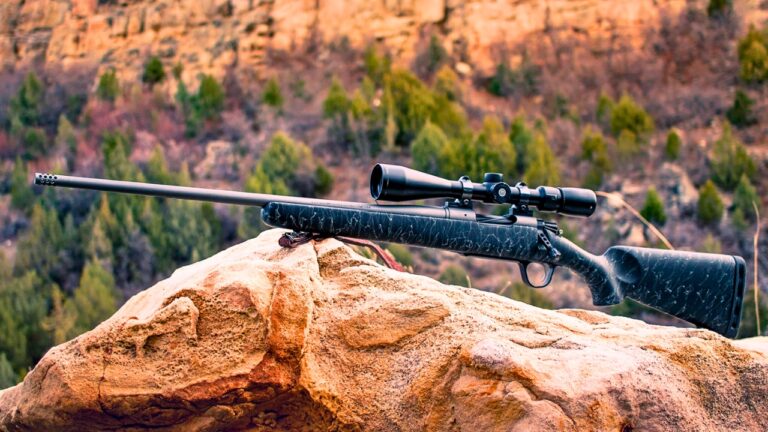Big sales don’t always mean big performance. A rifle might move off shelves because of price, brand recognition, or clever marketing, but that doesn’t guarantee it’ll shoot straight, hold up over time, or actually feel good in your hands. Some of the best-selling rifles out there are the ones that frustrate folks once they’ve spent real time with them. Here’s a look at rifles that lead the sales reports—but don’t always back it up when it’s time to shoot.
Remington 770

You’ll still see the Remington 770 on best-seller lists thanks to its low price and big-box availability, but it doesn’t live up to the reputation of the 700. The bolt feels rough, the trigger’s inconsistent, and the stock has a lot of flex. Even with decent ammo, it struggles to stay consistent beyond 100 yards. Many new shooters pick it up thinking it’s a deal, but it usually ends up getting replaced within a season or two.
Savage Axis XP

The Savage Axis XP sells well because it comes ready to shoot with a factory-mounted scope, but “ready to shoot” doesn’t always mean ready to impress. The scope quality is often the weak link, and the stock can feel cheap and uncomfortable after a few rounds. While Savage is known for good barrels, this package doesn’t always hold groups as well as buyers expect. For many, it’s a stepping stone to something better.
Mossberg Patriot

The Mossberg Patriot stays on top of sales lists due to its price and styling, especially the models with fluted barrels and walnut stocks. But those looks don’t always match the performance. The stock feels hollow, the trigger varies by unit, and the gun’s accuracy often drops off past 200 yards. It’s a popular entry-level option, but once you start shooting regularly, the limitations show up fast.
Ruger American Predator

Ruger’s American Predator sells in big numbers, especially in 6.5 Creedmoor, but not everyone walks away satisfied. The accuracy can be solid, but the factory magazines can be finicky, and the synthetic stock has enough flex to throw off consistency. The trigger is better than some in its class, but not great. A lot of shooters outgrow it once they’ve spent time dialing in longer shots or start loading their own ammo.
Smith & Wesson M&P15 Sport II

This rifle flies off shelves for good reason—it’s a cheap way to get into ARs. But once you start asking for precision, it hits a wall. The barrel twist limits ammo choices, and the lack of a forward assist or dust cover throws off traditional AR buyers. It’ll do fine at the range or for casual plinking, but once you want tighter groups or more reliability under stress, you’ll likely move on.
Remington 783

The Remington 783 was pushed as a follow-up to the 770, and it does fix a few things—but it still doesn’t shine at the range. Accuracy is hit-or-miss depending on caliber, the bolt throw is clunky, and the recoil pad does little to soften the feel. The stock can’t handle much abuse, either. It’s a common shelf item at big-box stores, but you won’t find many experienced shooters sticking with it long.
Winchester XPR

The Winchester XPR caught attention with its brand name and affordability, but it hasn’t lived up to what folks expect from a Winchester. The action feels rough, the stock flexes under pressure, and sub-MOA accuracy isn’t always in reach. It’s functional, but not refined. Most shooters give it a shot because of the name, then learn the hard way that it’s not in the same league as older Winchesters.
PSA PA-10

Palmetto State Armory rifles sell fast, and the PA-10 has become a go-to for budget-minded shooters wanting an AR-10. But quality control is inconsistent, triggers feel gritty, and reliability can suffer with certain mags and ammo. Accuracy can be good—but isn’t always. It’s common for new buyers to be excited out of the box, then frustrated once they start pushing it harder.
Thompson Center Compass

T/C made a big push with the Compass as a value-packed bolt gun, and it grabbed a decent chunk of sales. But once buyers start working the bolt and watching their groups, problems come up. The magazine design is awkward, the stock feels toy-like, and recoil management is rough on the shoulder. It might look good at first glance, but the shooting experience rarely holds up long-term.
Marlin XT-22

This .22 rifle is a common choice for beginners, and it sells well thanks to price and name recognition. But the plastic trigger guard, stiff bolt, and mediocre accuracy leave a lot to be desired. It’s not as smooth or reliable as other rimfires in its class, and malfunctions aren’t uncommon with bulk ammo. For casual plinking, it works—but it’s not the go-to many people expected when they bought it.
Diamondback DB10

The DB10 often ranks high on sales lists because of its price tag, but the fit and finish aren’t up to par. The trigger has a lot of creep, accuracy is spotty unless you find the perfect ammo, and tolerances can lead to feeding issues. It’s attractive to first-time .308 AR buyers, but it doesn’t always earn its keep once you start pushing it at the range.
Century Arms C308

This G3 clone gets a lot of attention for its battle-rifle looks and aggressive price point. But ergonomics are rough, recoil is heavy, and the iron sights are hard to dial in. Some units shoot okay, others have cycling issues or rough chamber finishes. It’s not a bad rifle for the money—but plenty of shooters find it more frustrating than fun once the range day gets going.
*This article was developed with AI-powered tools and has been carefully reviewed by our editors.






